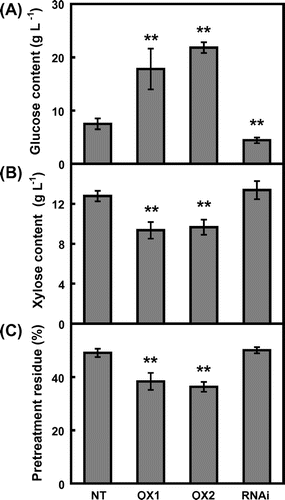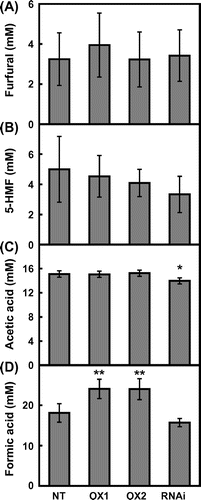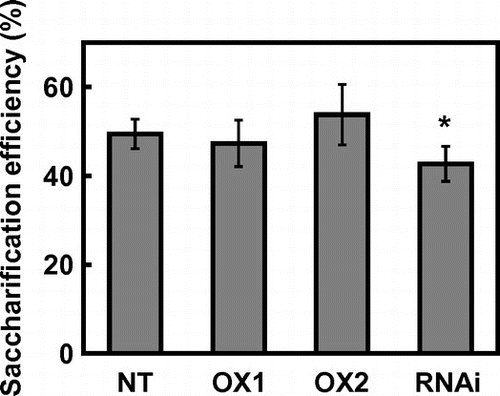Figures & data
Figure 1. Soluble sugar contents and pretreatment residue in hydrolyzate of rice straw.

Table 1. Composition of constituents in rice straw of CRCT transgenic lines.
Figure 2. Fermentation inhibitor contents in hydrolyzate of rice straw.

Figure 3. Saccharification efficiency of acid-insoluble residue.
